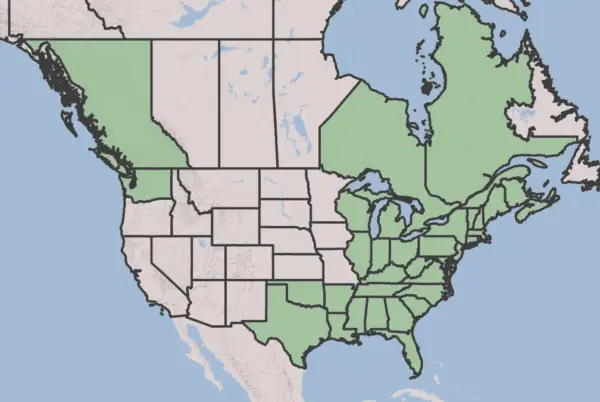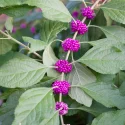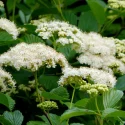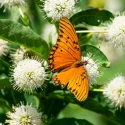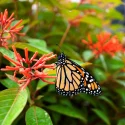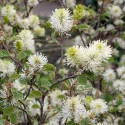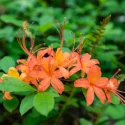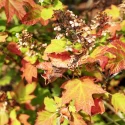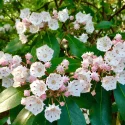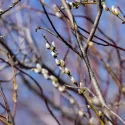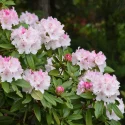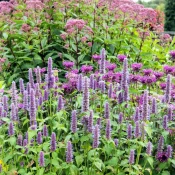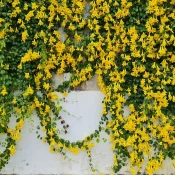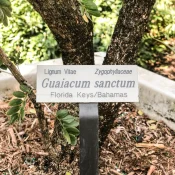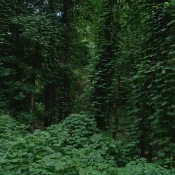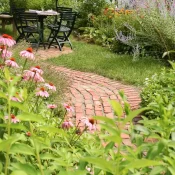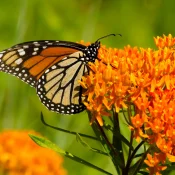Highbush Blueberry
Native blueberries come in two general groups: Highbush and Lowbush. In this article, we’ll focus on Highbush.
Highbush blueberries can grow up to 15 feet tall, producing large, sweet berries in the summer. They thrive in full to partial sun. In the fall, their leaves turn brilliant shades of orange and red. These native shrubs are beautiful and worthy of planting for both their snacking and landscaping value. They are perfect mixed in with evergreens in privacy fences, or alongside other native shrubs and flowers. Scroll on to meet a few native species.
- Full Sun, Part Sun
- Medium Shrub (6-10')
- Spring flowers
- Host Plant
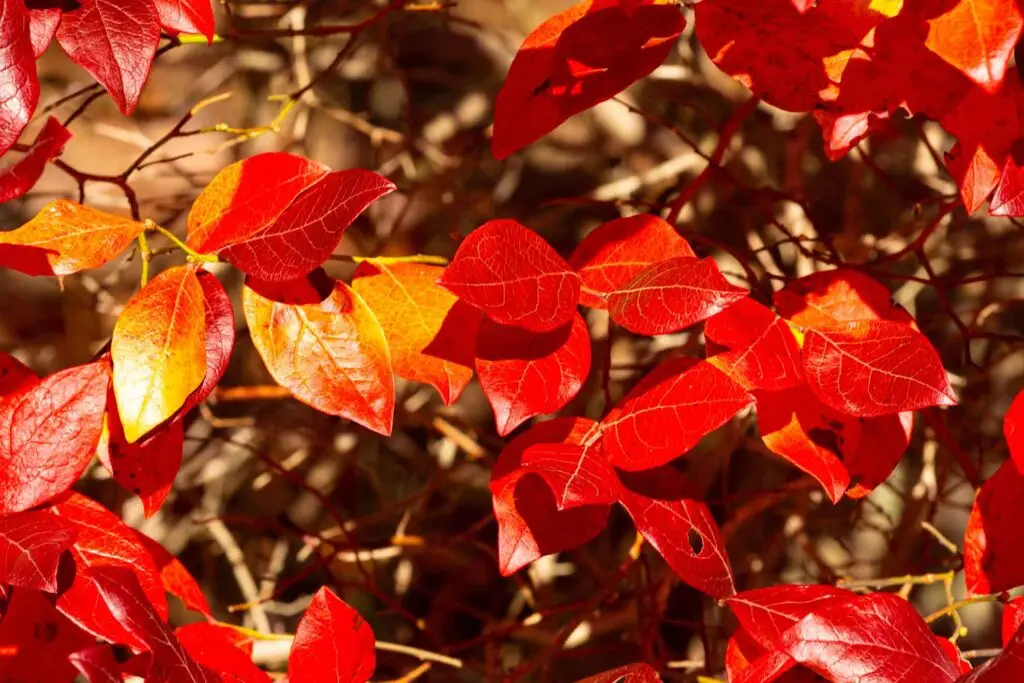
Dig Deeper
Explore the history, types, and where to plant native Highbush Blueberries
Table of Contents
What are the benefits of planting a Highbush Blueberry?
Native plants like Highbush Blueberries have been around in North America for thousands of years. Every drought, blizzard, or weather event they have lived through. They know (and thrive!) in the soil and weather of their home area. All they need is rain to thrive after their first year being established.
Native plants like Highbush Blueberries are always the most resilient, easy to care for, and beautiful choices for landscaping. They require minimal care (especially compared to lawns!) and can return decades of beauty and tasty berries.
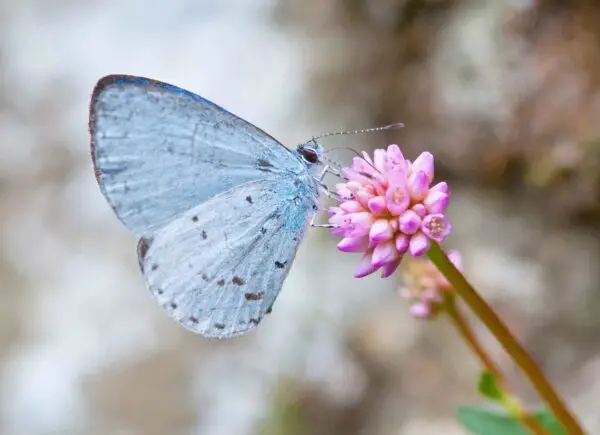
Highbush Blueberries are also host plants for Spring Azure butterflies
And one more reason to plant these native shrubs—you’ll be helping Spring Azure butterflies thrive. Highbush Blueberry leaves are food for Spring Azure caterpillars, making them a host plant (here’s a quick host plant overview.)
Finally—the berries from Highbush Blueberries are delicious! The berries are edible to people, birds, and wildlife. Every Highbush Blueberry planted helps feed hungry birds (and people!)
Types of native Highbush Blueberries
This article is primarily focused on a specific plant that goes by the Latin name Vaccinium corymbosum. Latin names can feel intimidating—but don’t worry! You don’t need to commit plants Latin names to memory (unless that’s your thing.) Latin names help us ensure we are looking at the right plant since every plant has only one Latin name.
Having a single Latin name helps when there are multiple plants with the same non-Latin name—like Highbush Blueberries.
There are a few other native blueberries that are sometimes lumped into the ‘Highbush Blueberry’ moniker. Each of these plants make edible fruit, and have leaves that turn fiery shades of red in the fall. Species called ‘Highbush Blueberry’ include:

Highbush Blueberry
Vaccinium corymbosum
This species of blueberry is often considered the ‘true’ Highbush Blueberry. Its native range—as seen above—is HUGE, from northeast Canada down to the American South, along with British Columbia and Washington state. They grow up to 12 feet tall.
There are dozens of ‘V. corymbosum’ cultivars available. Cultivars are plants curated and changed by humans—here’s a cultivar overview.

Rabbiteye Blueberry
Vaccinium virgatum
Rabbiteyes are similar in looks to the ‘V. corymbosum’ but its leaf color is a more silvery-blue. It’s primarily found in the Southeastern US. This makes them perfect for warmer southern gardens.
Rabbiteye gets its name from the color of the berries before they are ripe—they are light pink, like white rabbits.
Many Rabbiteye cultivars are available, offering different fruiting times (sometimes early fruit, sometimes later fruit.) Cultivars you may encounter include, ‘Premier,’ ‘Bluebell,’ and ‘Climax.’
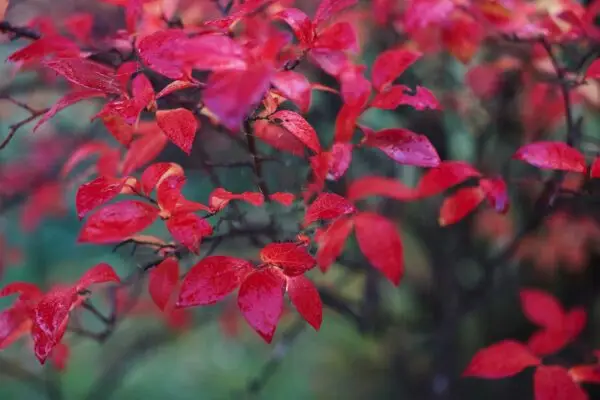
Elliott’s Blueberry
Vaccinium elliottii
All native blueberries’ leaves turn shades of orange and red in the fall. But Elliot’s Blueberry’s leaves turn BRIGHT red. Its leaves are also smaller than Rabbiteye’s.
Elliot’s are smaller, too—topping out at 4-6 feet tall and wide. Elliot’s thrive in the Midatlantic to Southeast—from Virginia to Florida, and west to Texas. They fruit in the spring.
NC State University + Longwood Gardens have a great (and very detailed!) video outlining Highbush blueberries:
Where are Highbush Blueberries native?
As you now know, there are many species of Highbush Blueberries. The one with the largest range and the common name “Highbush Blueberry” (Vaccinium corybosum) is native to the entire eastern half of North America, from Nova Scotia all the way south to Florida, and west to Texas. High bushes are also native to Washington and British Columbia.
Because the range of Highbush Blueberries is so large, it’s best to buy from local nurseries or plant sales, so you get plants that are used to your geographic range and weather.
You’ll need to plant at least two blueberries for fruit!
Blueberries require another blueberry nearby for cross-pollination. The bonus of this cross-pollination is that both plants will extend each other’s growing season and help make berries more plentiful and tasty.
Plant at least two types of blueberries—ideally different species or cultivar types!—whenever planting these native shrubs. This cross-pollination is also required for some other native plants that fruit, like Pawpaw trees.
How to grow Highbush Blueberries
Highbush Blueberries are extremely easy to grow. Because they are perennials, plant once and they will come back year after year.
Do Highbush Berries like sun or shade?
Highbush Blueberries thrive in full sun to part sun. They do not do well in full shade.
Do Highbush Blueberries need special soil?
Highbush Blueberries do best in acidic soils. In nature, acidic soils can come from many things, including proximity to evergreen trees like pine trees. To keep blueberries happy in acidic soil, we love the trick shared by Patricia A. Taylor in her excellent book “Easy Care Native Plants“
“We do, however, always put branches from our stripped Christmas tree around the plants in January so that the dried needles will keep the soil acidic.”
What other native plants make edible fruit?
Many other native plants produce fruit that is edible to humans. Here are some other edible natives to consider:
What are good pairings for Highbush Blueberries?
Because Highbush Blueberries like acidic soil, plant them with other native shrubs that enjoy it, too. Acidic-soil-loving native favorites include native azaleas, rhododendrons, mountain laurels, magnolias, dogwoods, Oakleaf Hydrangeas, hollies, and native evergreens.
Native plants for acidic soils
Highbush Blueberries are amazing, easy-to-grow native shrubs that offer fruit and beauty throughout the year. They are a beautiful and tasty addition to any Mid-Atlantic, Midwest, Northeast, or Southern garden. Plant a few in your landscaping amongst other native shrubs and flowers to ensure you and the pollinators have lots to eat and admire. Happy planting!
Sources
- Nelson, Gil. Best Native Plants for Southern Gardens: A Handbook for Gardeners, Homeowners, and Professionals, (2010), 122-127.
- NC State Extension, Rabbiteye Blueberry
- NC State Extension, Elliott’s Blueberry
- The Spruce, “Acidic Loving Plants“
- Turtle Creek Watershed Association, Native Plants for Acid Soils. PDF, (2008).
- Harstad, Carolyn. Go Native! Gardening with Native Plants and Wildflowers in the Lower Midwest, (1999), 231-232.
